The Trump Jan. 6 Indictment, Annotated
The Justice Department unveiled an indictment on Tuesday charging former President Donald J. Trump with four criminal counts. They relate to Mr. Trump’s attempts to overturn the results of the 2020 election, which culminated in the Jan. 6 attack on the Capitol by a mob of his supporters.
The New York Times is annotating the document. Check back for updates as we read through it.
Download the full PDF
New York Times Analysis
Next »
1
Unlike the charges against former President Donald J. Trump over his hoarding of secret national security documents, which will be tried before a jury pool drawn from around Palm Beach County in Florida, the Jan. 6 indictment was returned by a grand jury in the District of Columbia. Because registered Democrats are more common in the nation’s capital, jurors may on average be less politically sympathetic to Mr. Trump.


New York Times Analysis
« Previous
Next »
2
A conviction on this charge would be punishable by up to five years in prison. The possibility of using this charge against Mr. Trump and his associates in connection with their effort to overturn the election results has long been part of the public discussion of the investigation. In March 2022, for example, a federal judge ruled that emails to and from John Eastman, a lawyer who advised Mr. Trump in the effort, likely involved that crime and so qualified for an exemption to attorney-client privilege. In its final report in December 2022, the House committee that investigated the events that culminated in the Jan. 6 riot recommended that the Justice Department charge Mr. Trump and others with this offense.
3
The purpose of the conspiracy was to overturn the legitimate results of the 2020
presidential election by using knowingly false claims of election fraud to obstruct the federal
government function by which those results are collected, counted and certified.
Annotation: This sentence succinctly encapsulates the entire narrative laid out in the indictment.

New York Times Analysis
« Previous
Next »
4
One of the unnamed co-conspirators in the indictment is Jeffrey Clark. Prosecutors describe him as “Co-Conspirator 4,” saying that as a lawyer at the Justice Department, Mr. Clark schemed with Mr. Trump to persuade the department to open “sham election crime investigations” to “influence state legislatures with knowingly false claims of election fraud.”

New York Times Analysis
« Previous
Next »
5
The indictment lays out five categories of actions that it identifies as the means by which Mr. Trump and his accused co-conspirators sought to subvert the election. While listed under the first count — conspiracy to defraud the United States — the same facts will later be invoked to support the other three charges that appear later in the indictment.








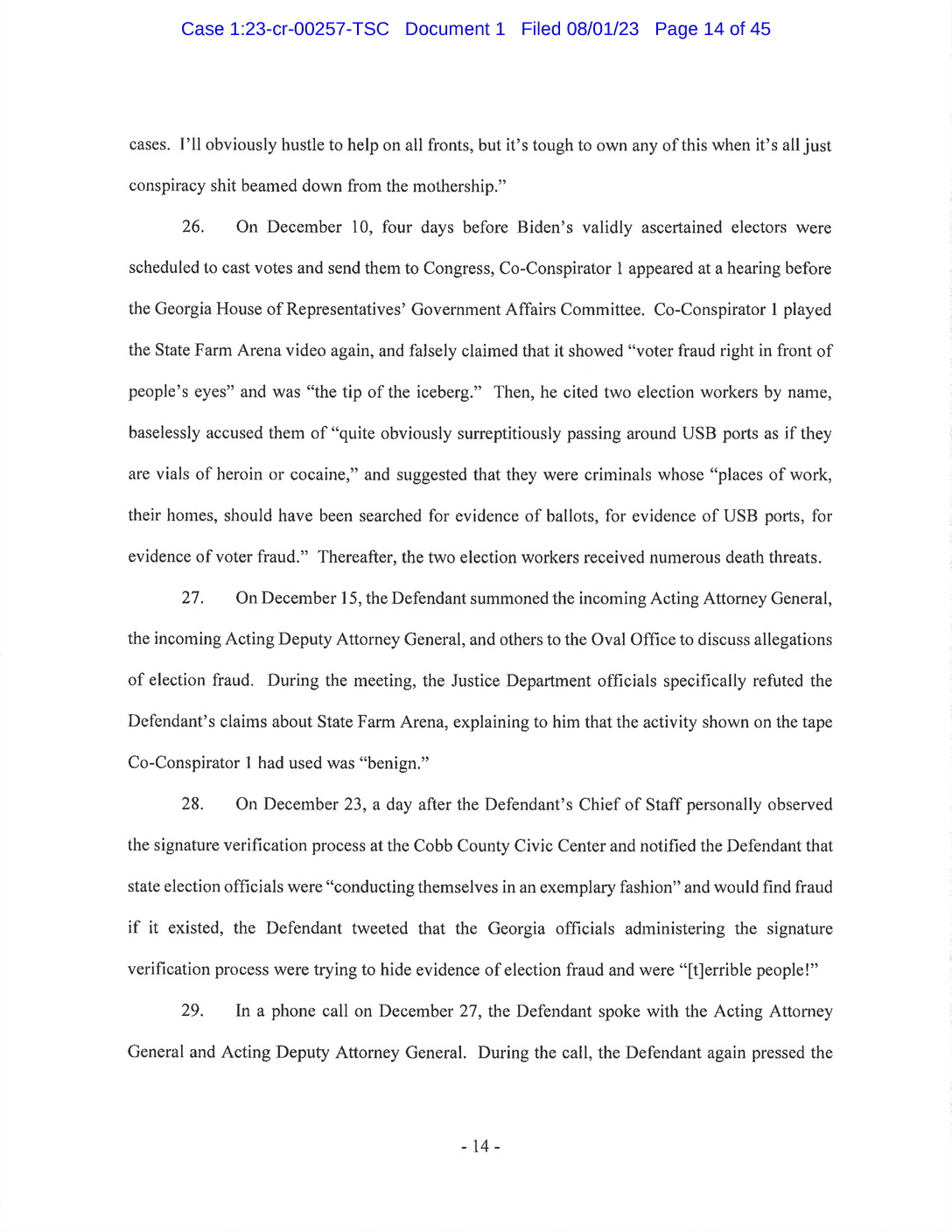


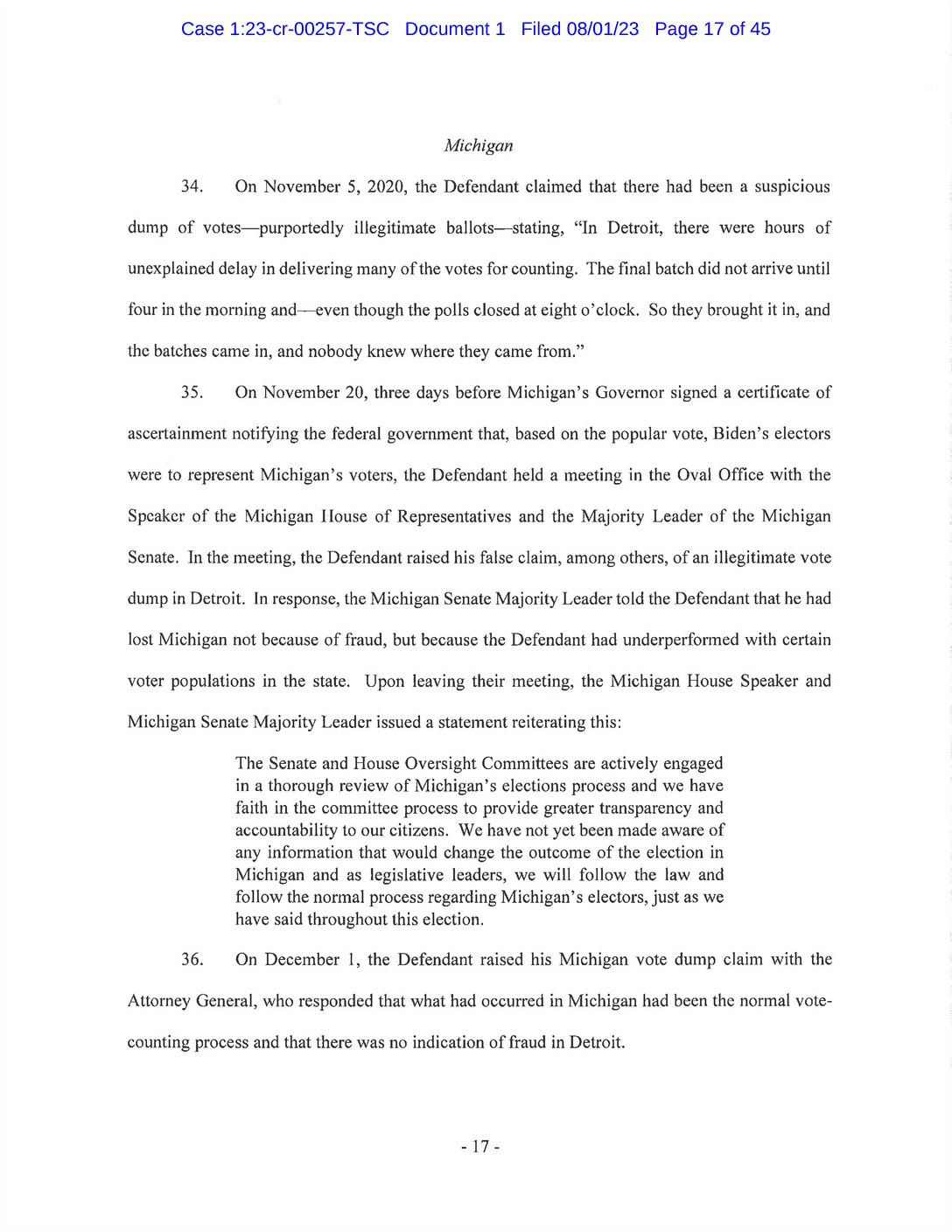
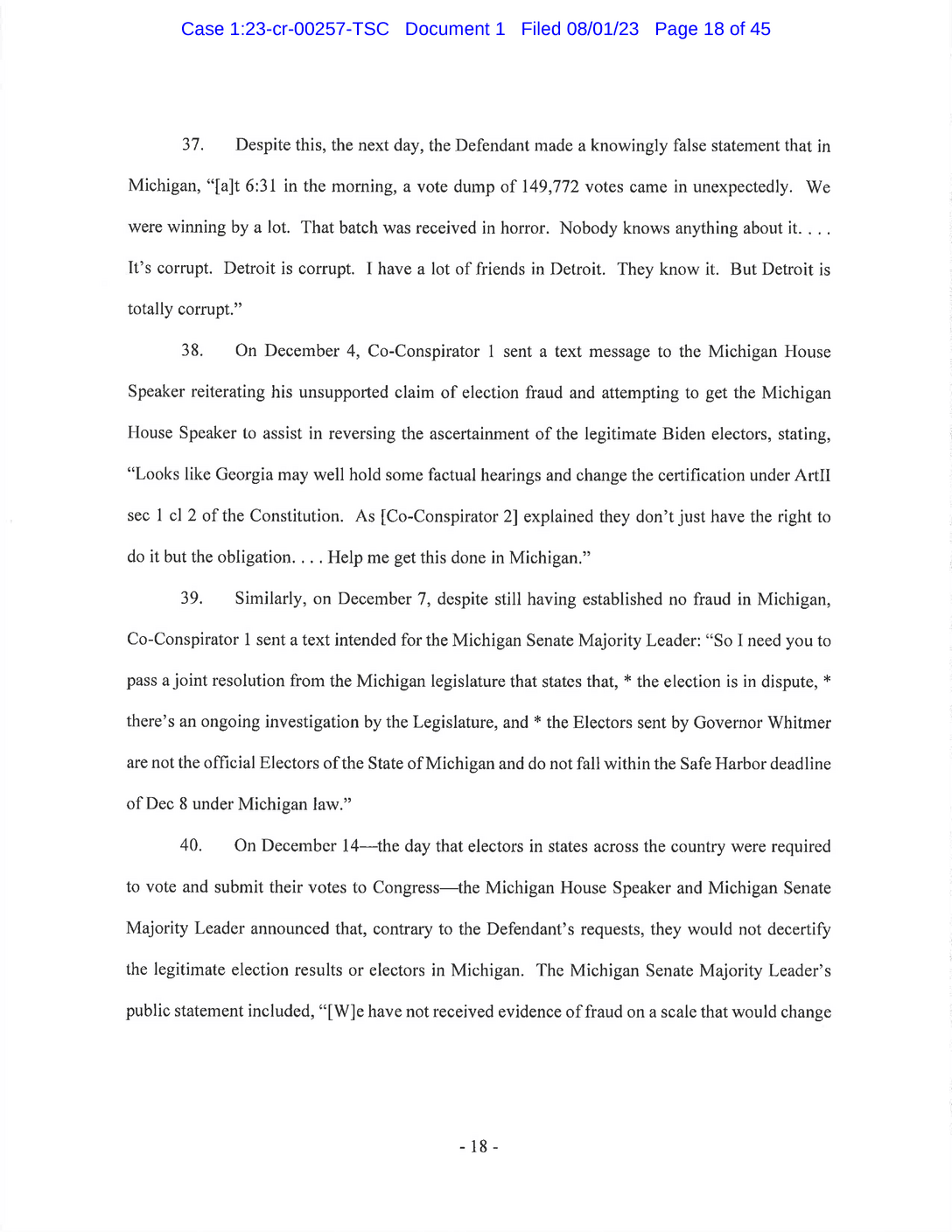

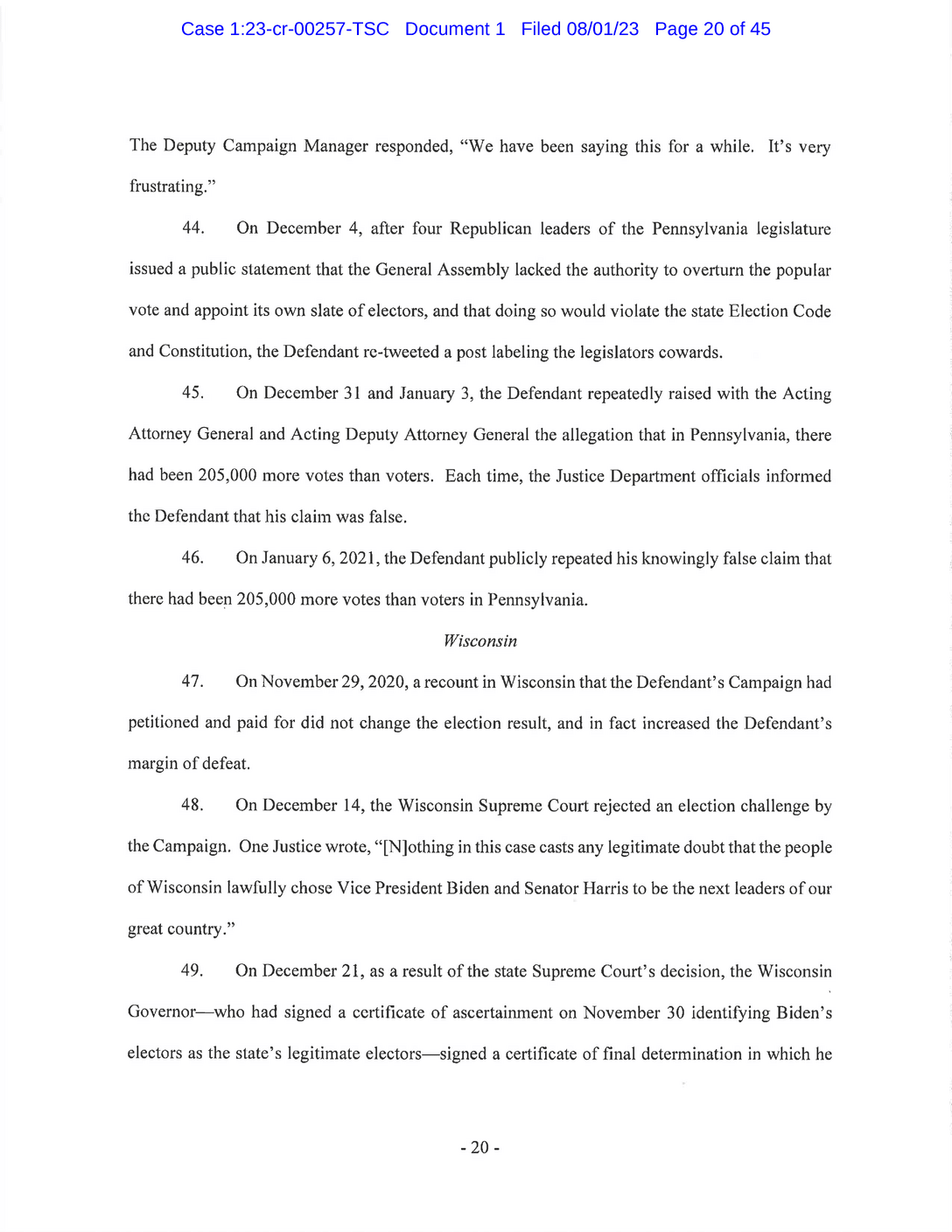
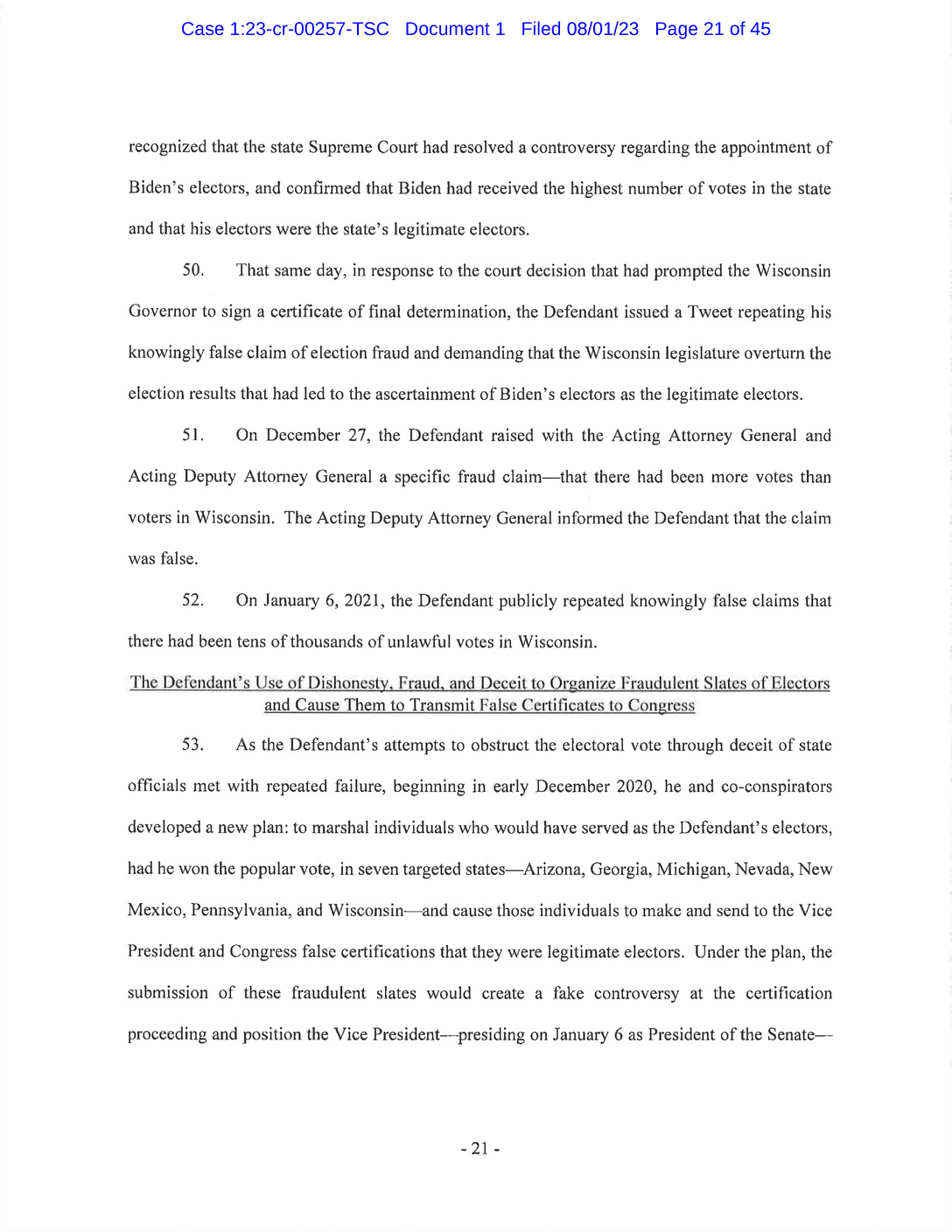
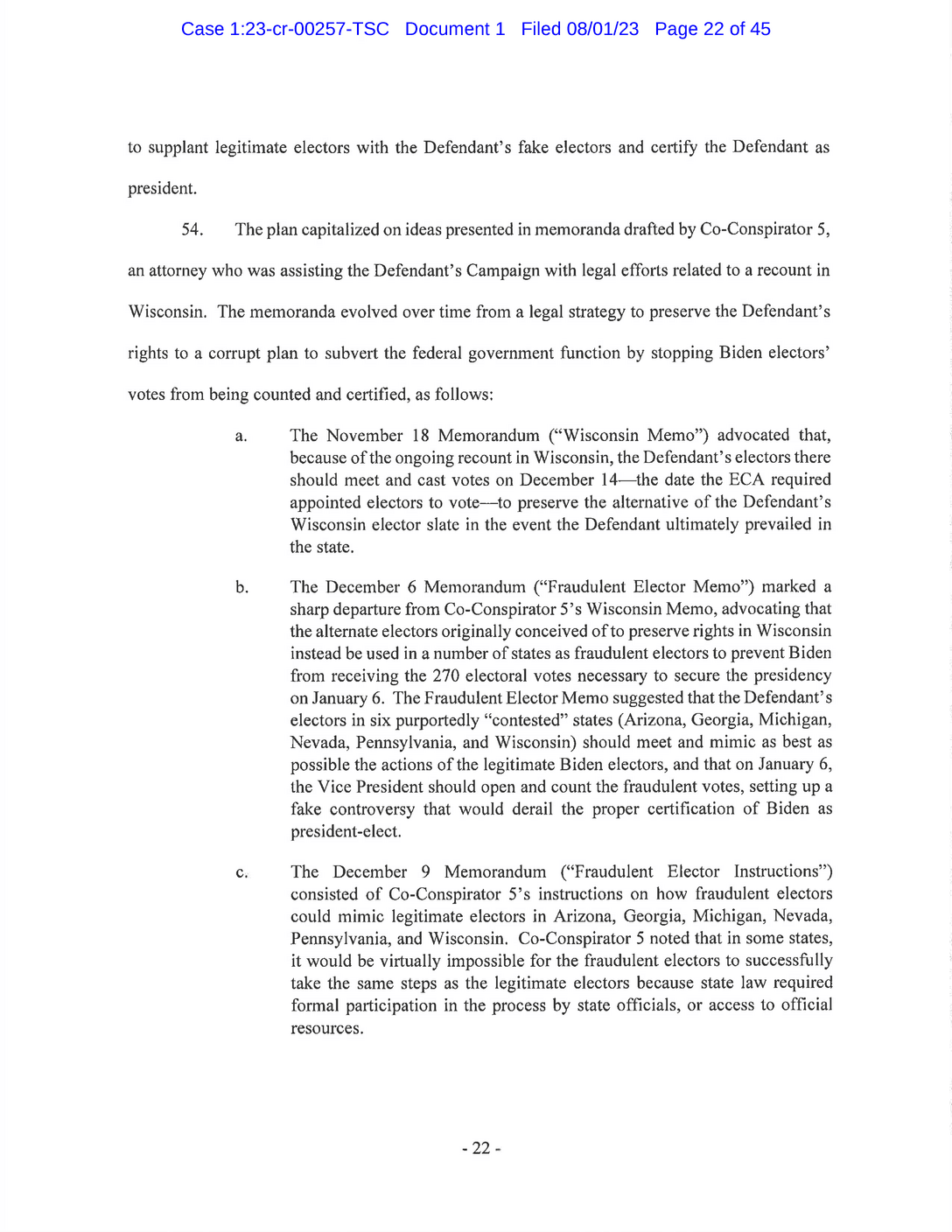
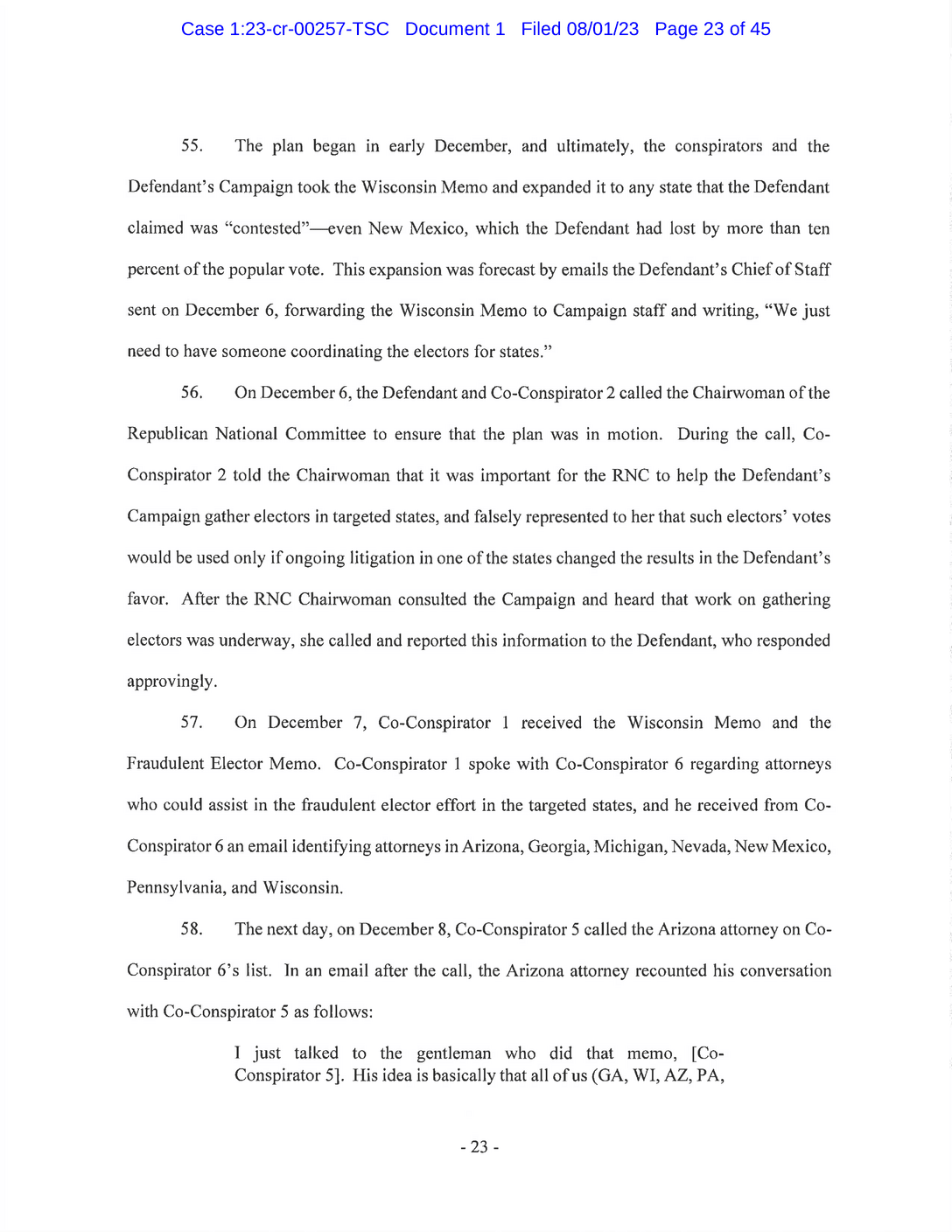
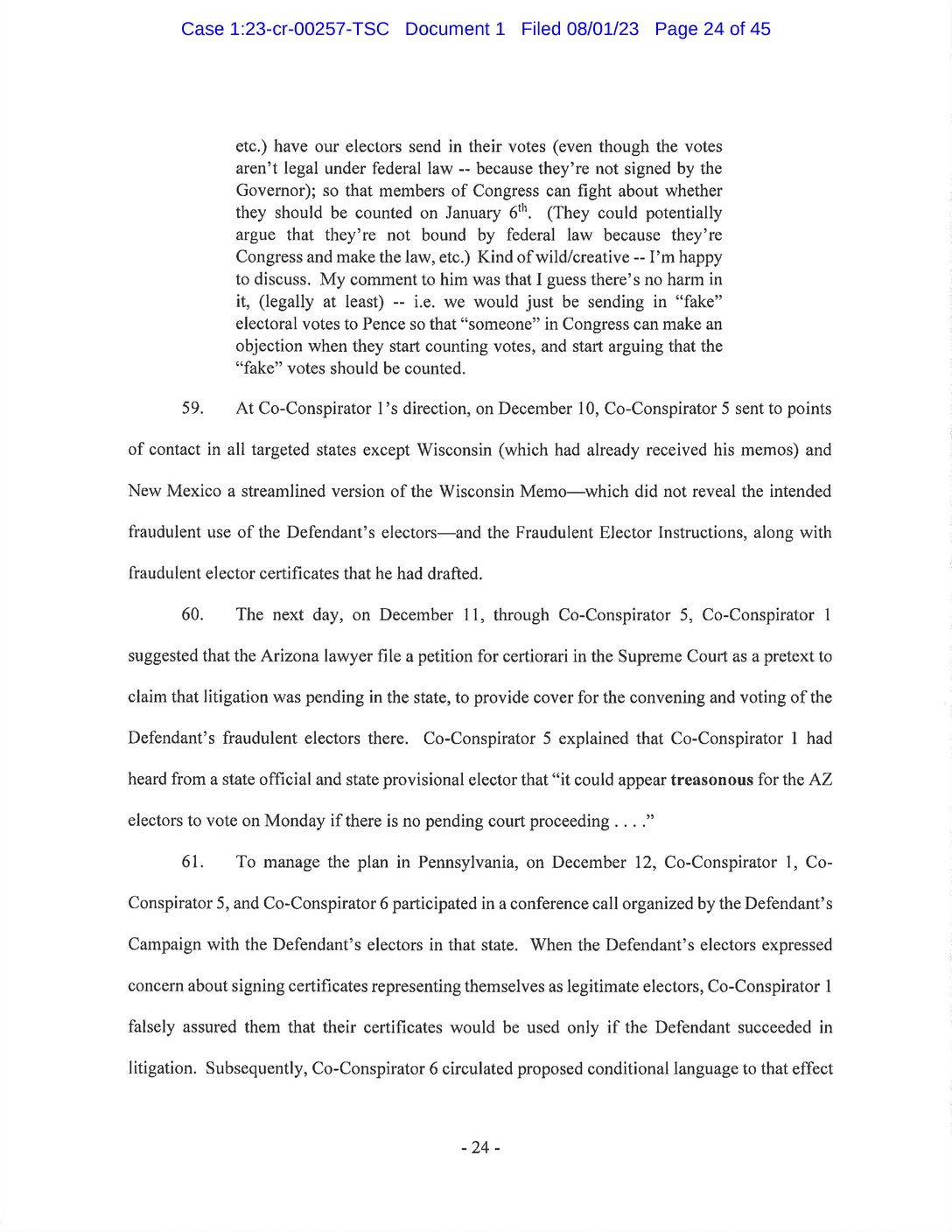
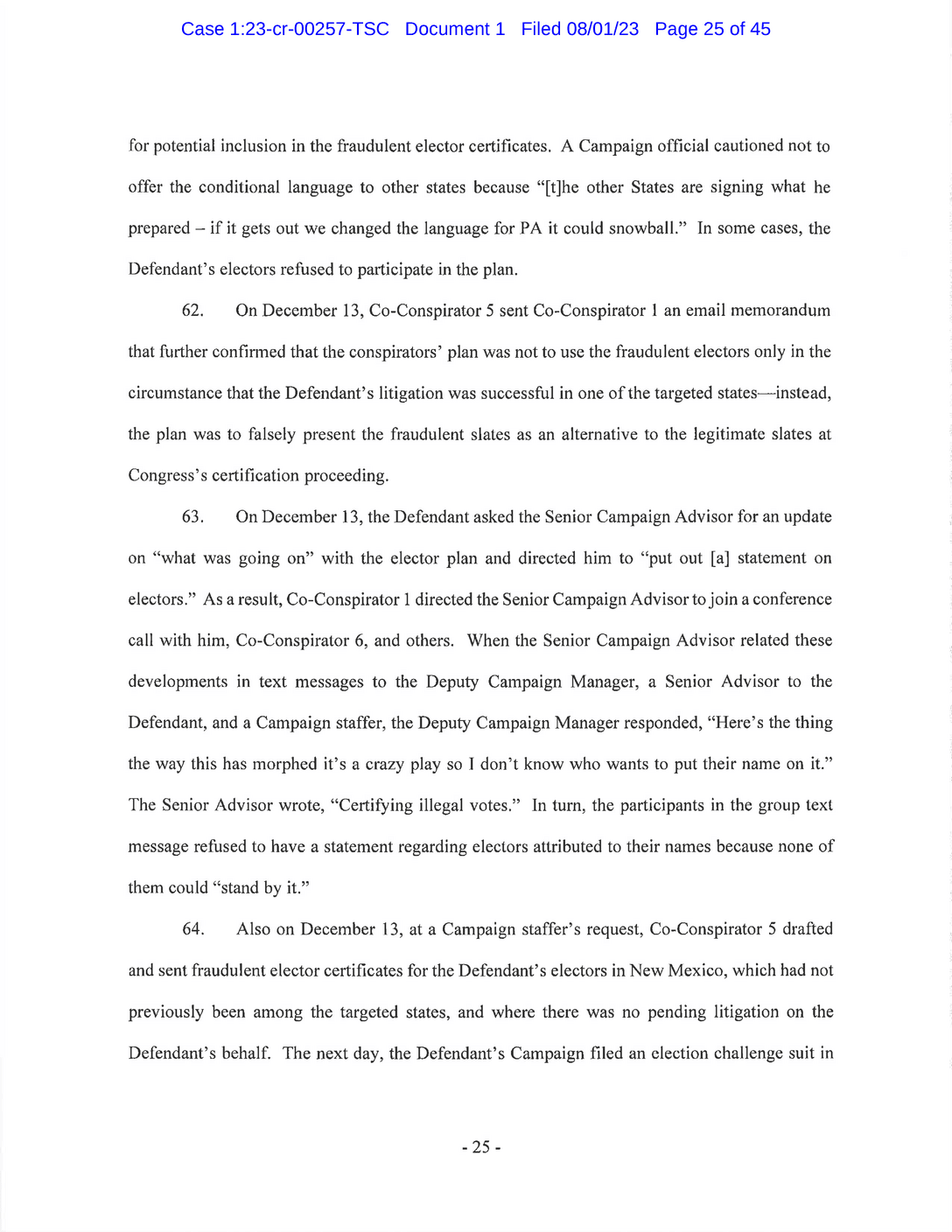
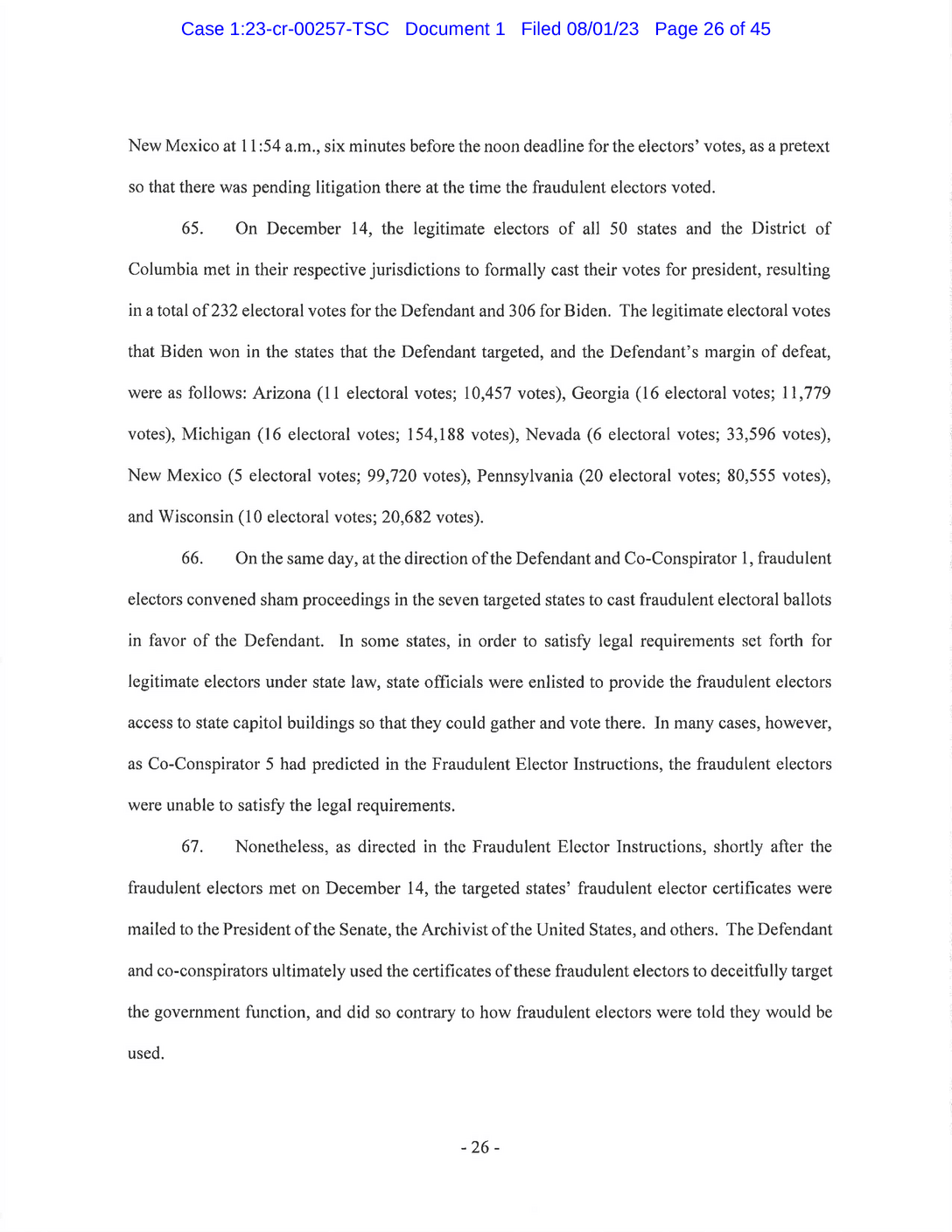
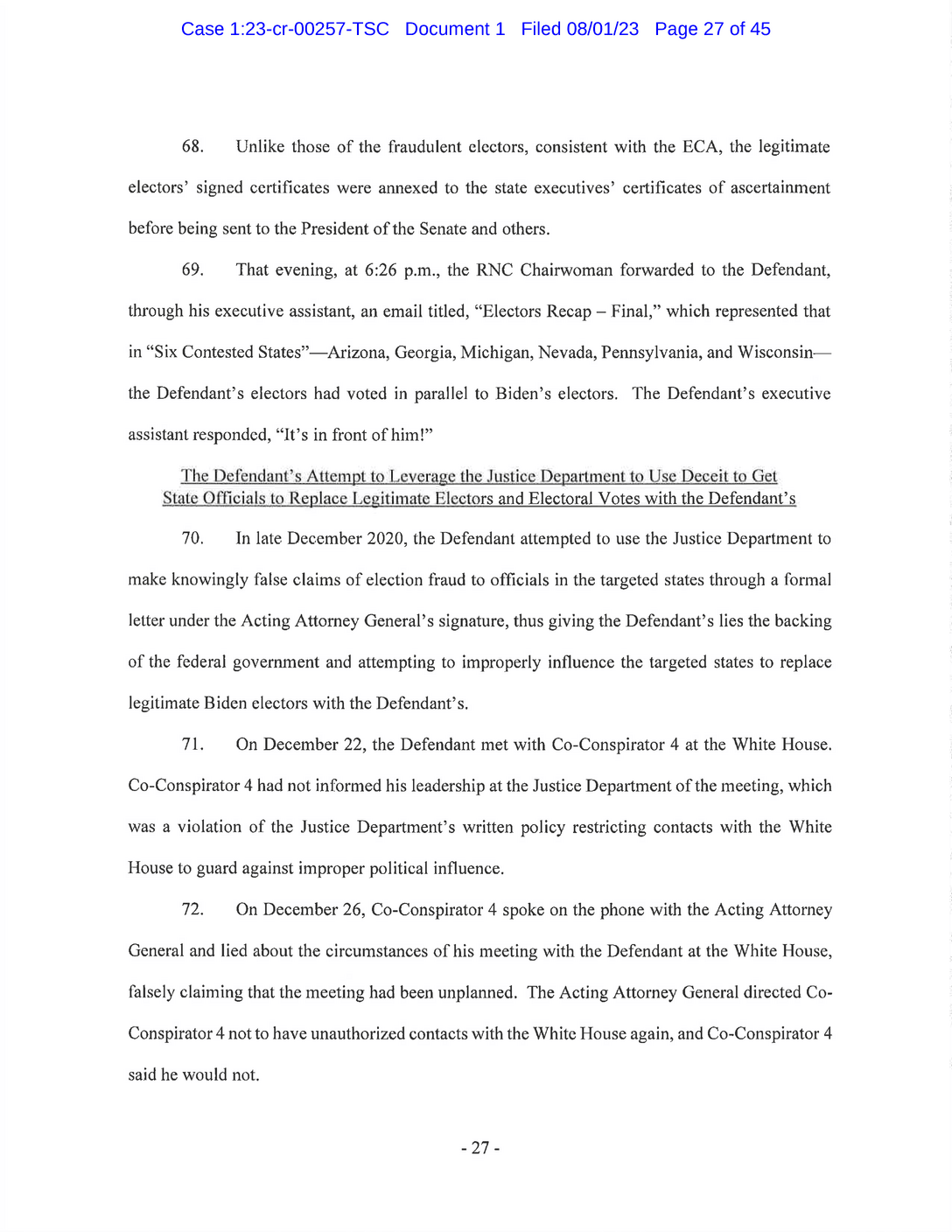
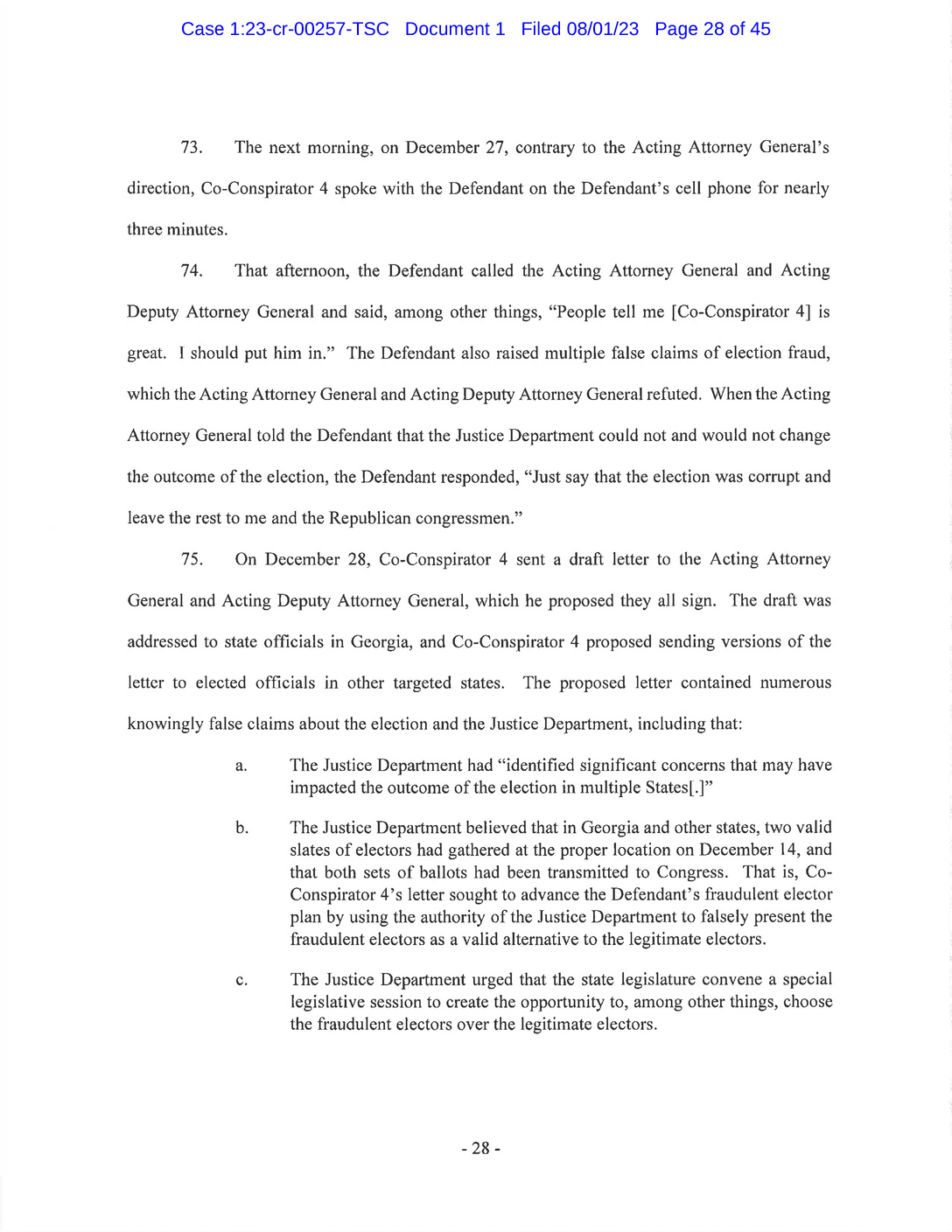
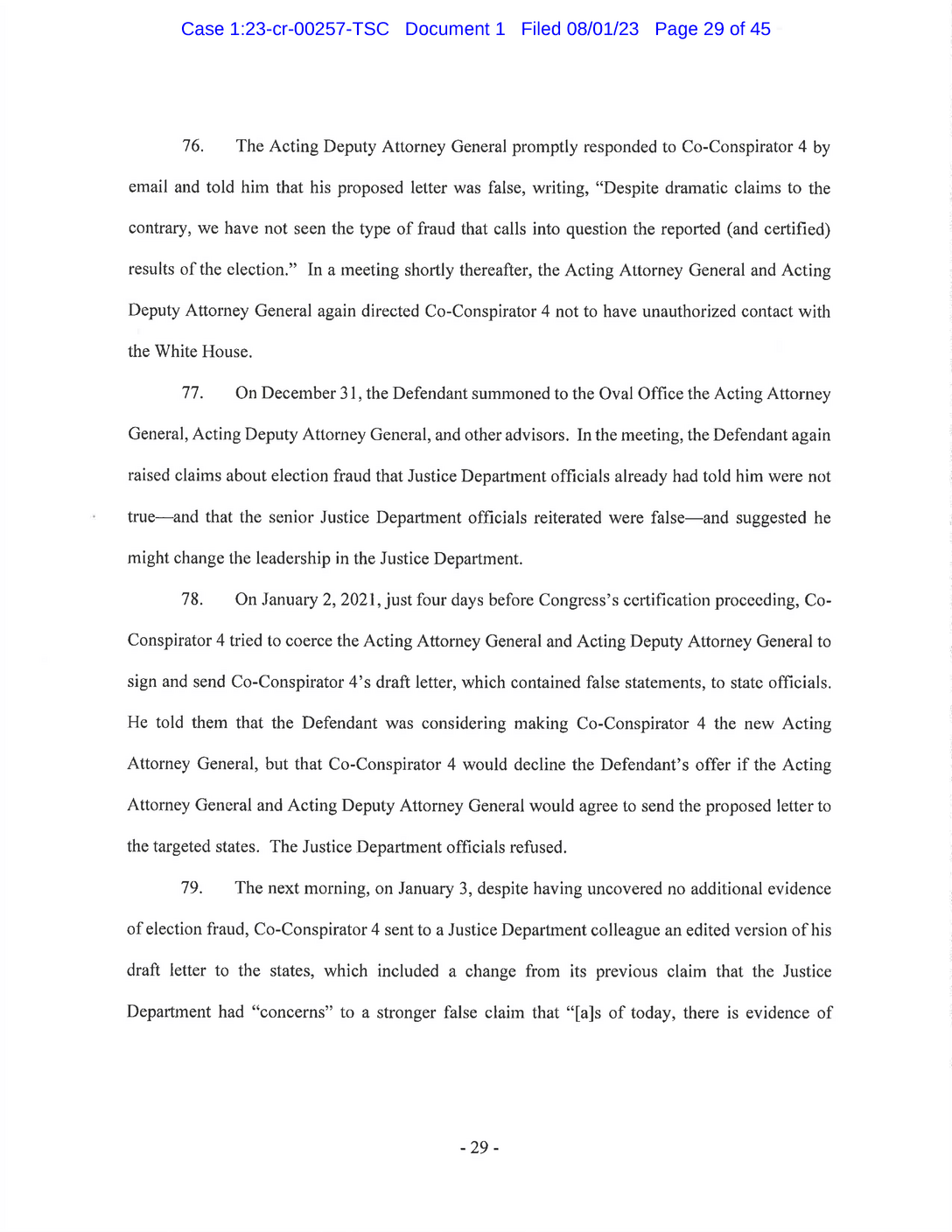
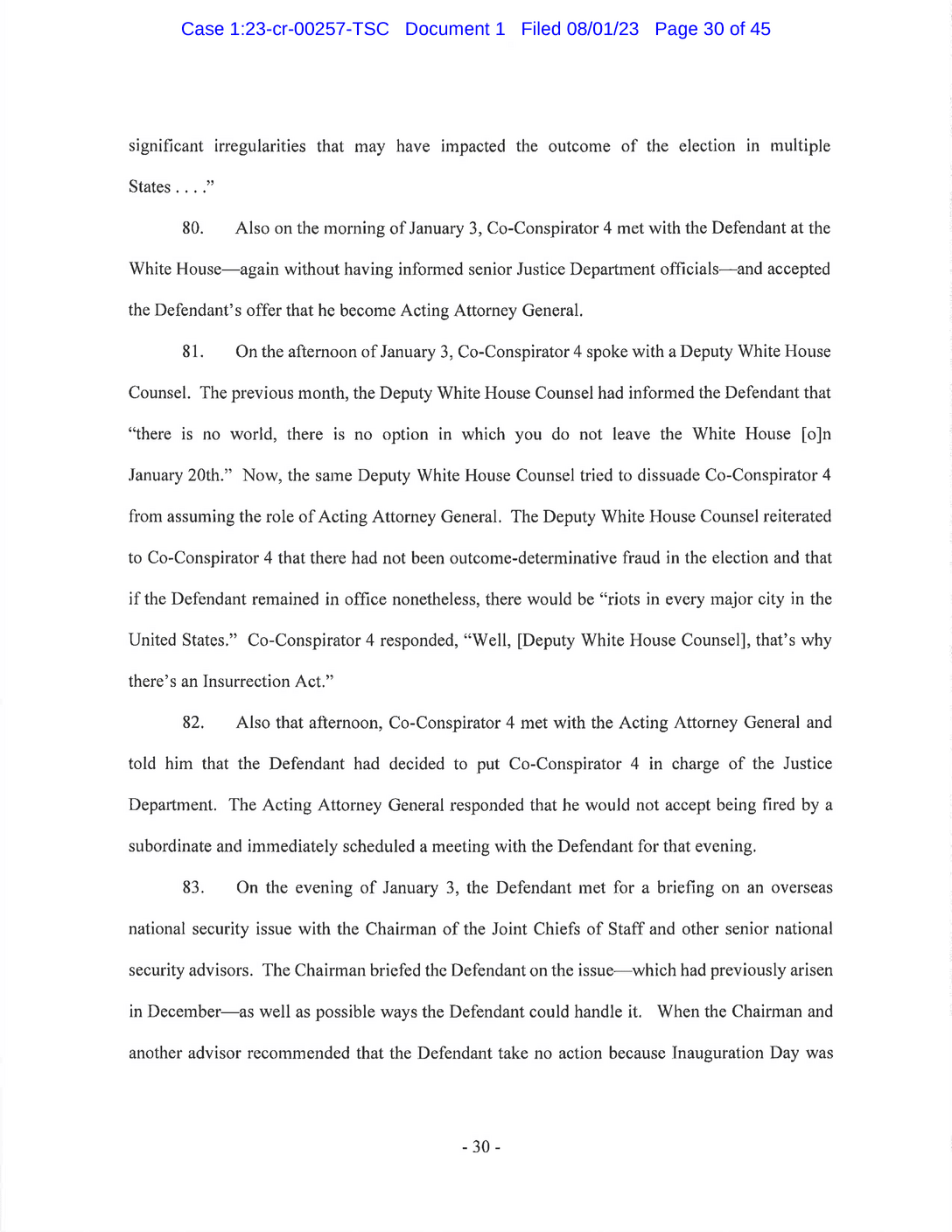
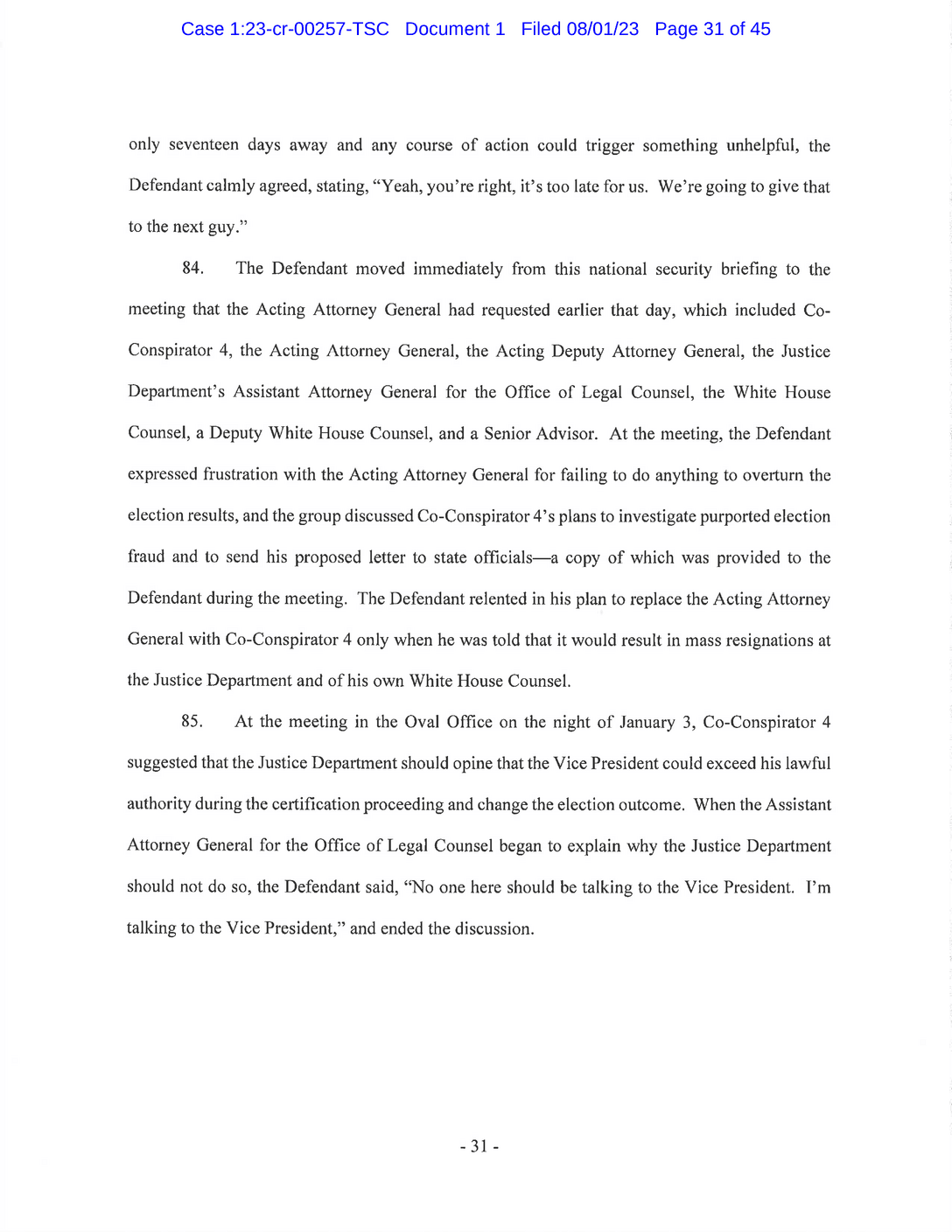
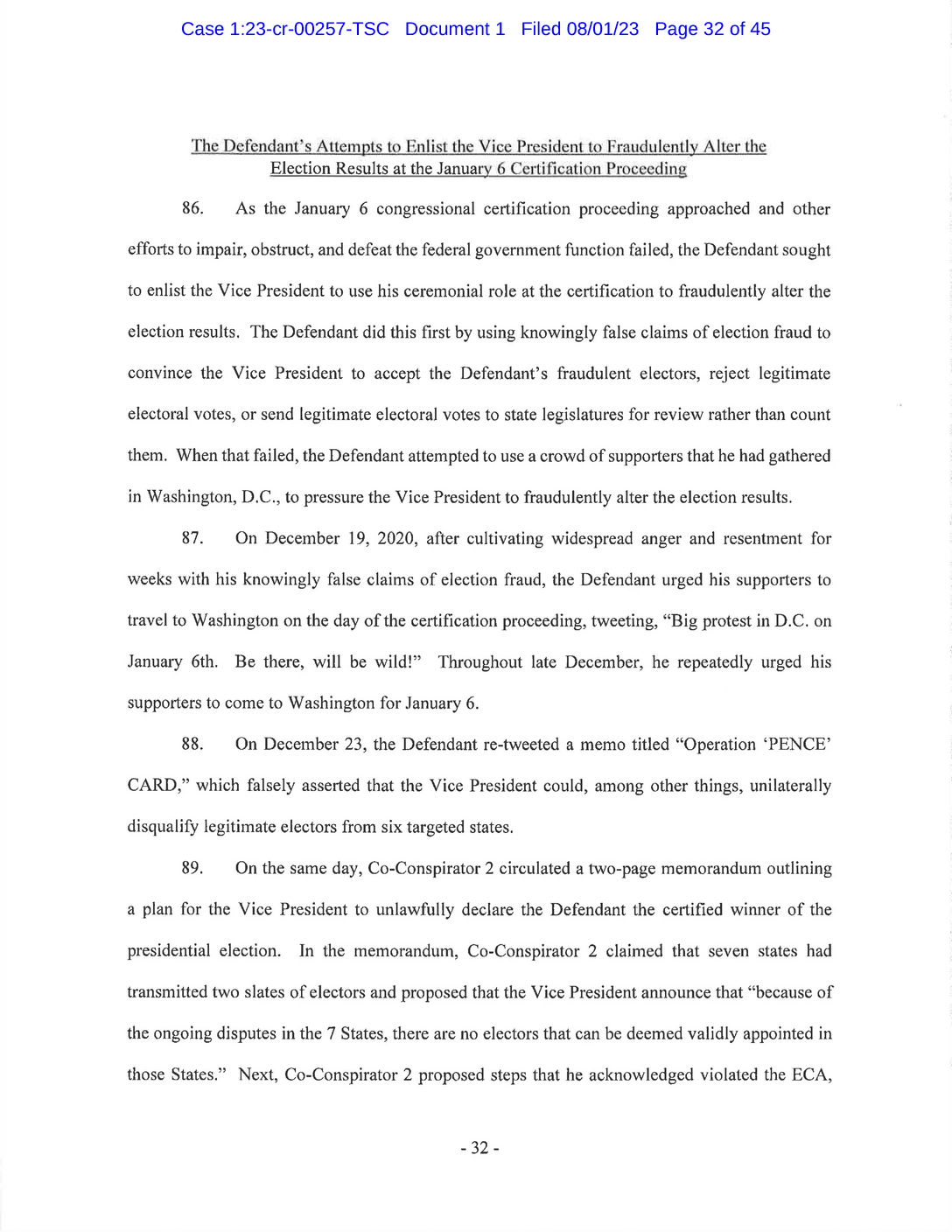

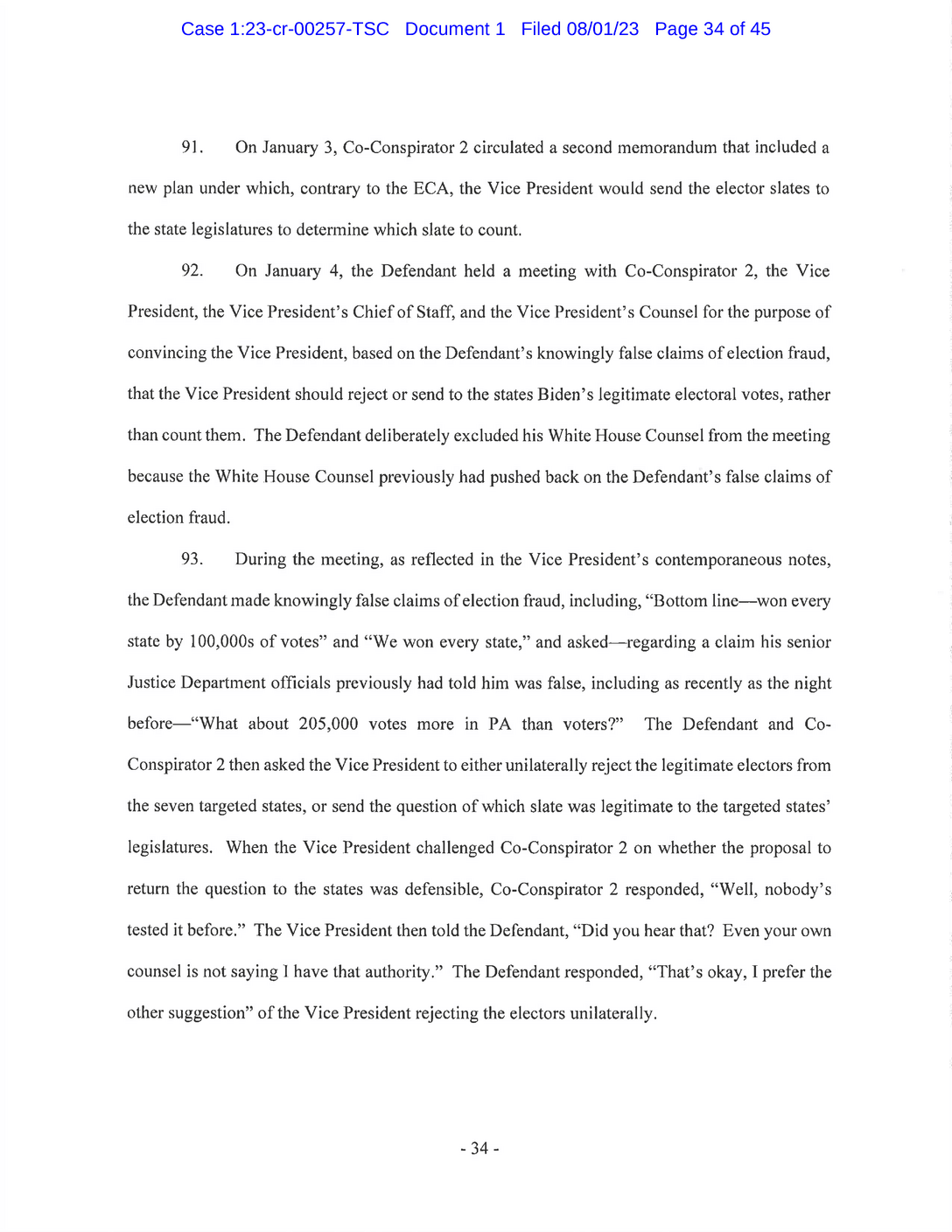
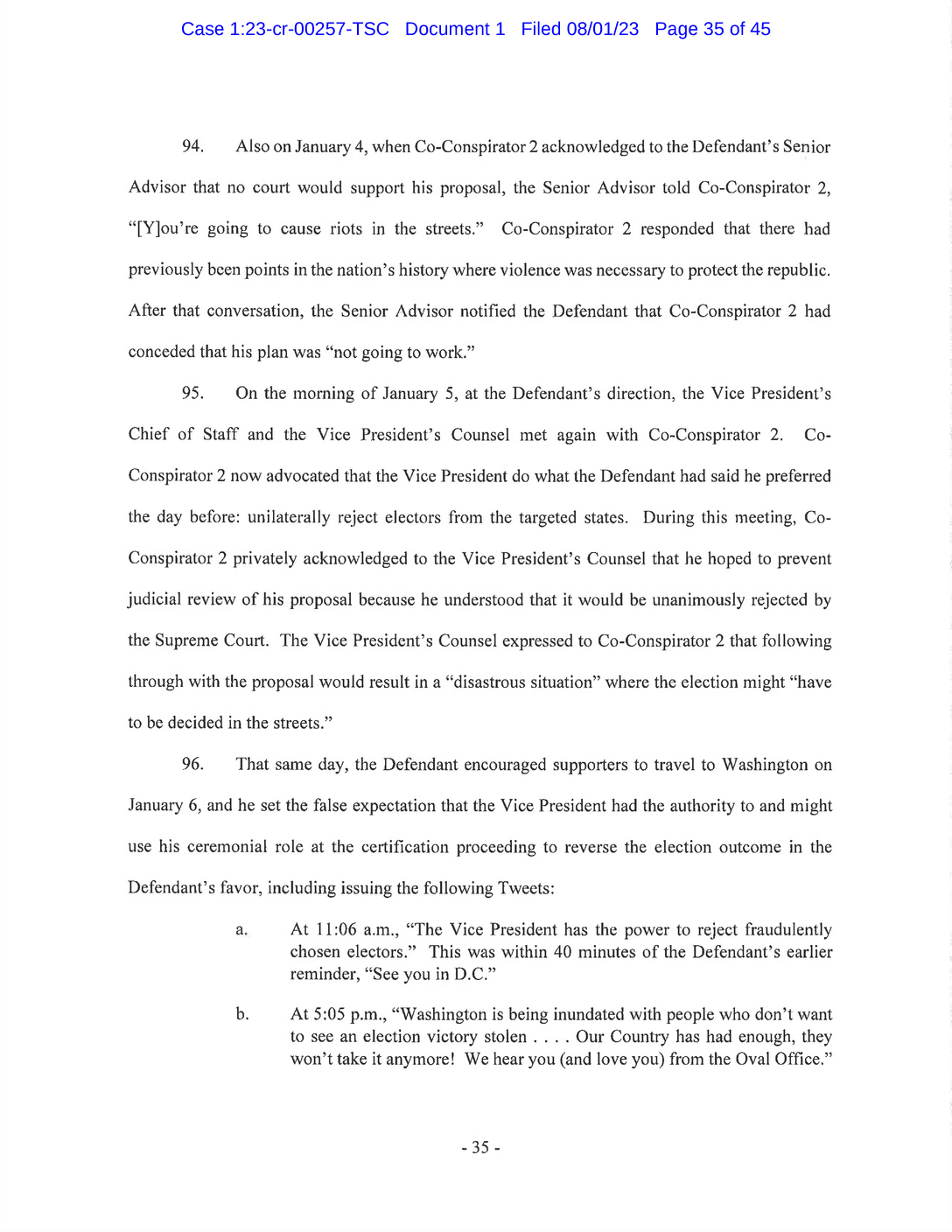
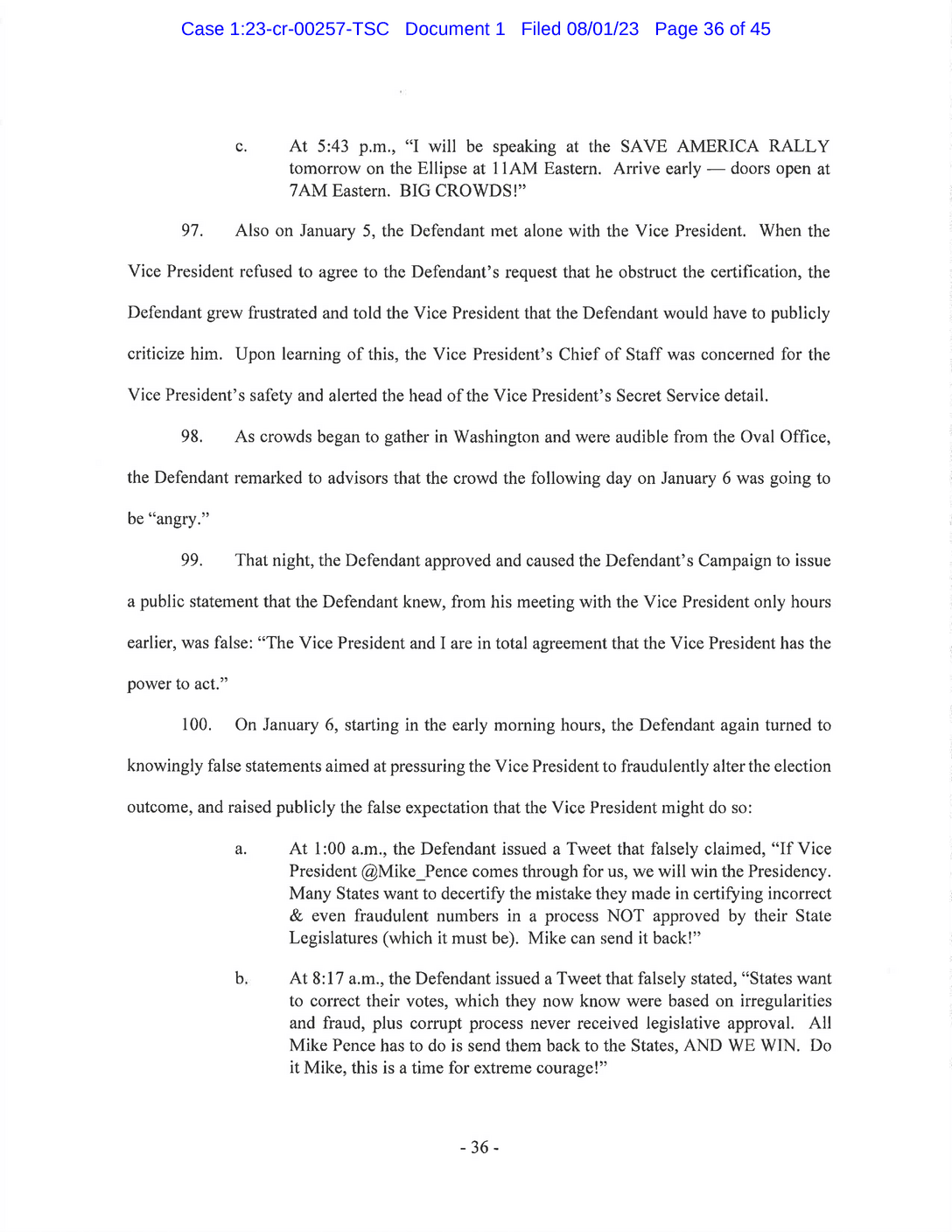

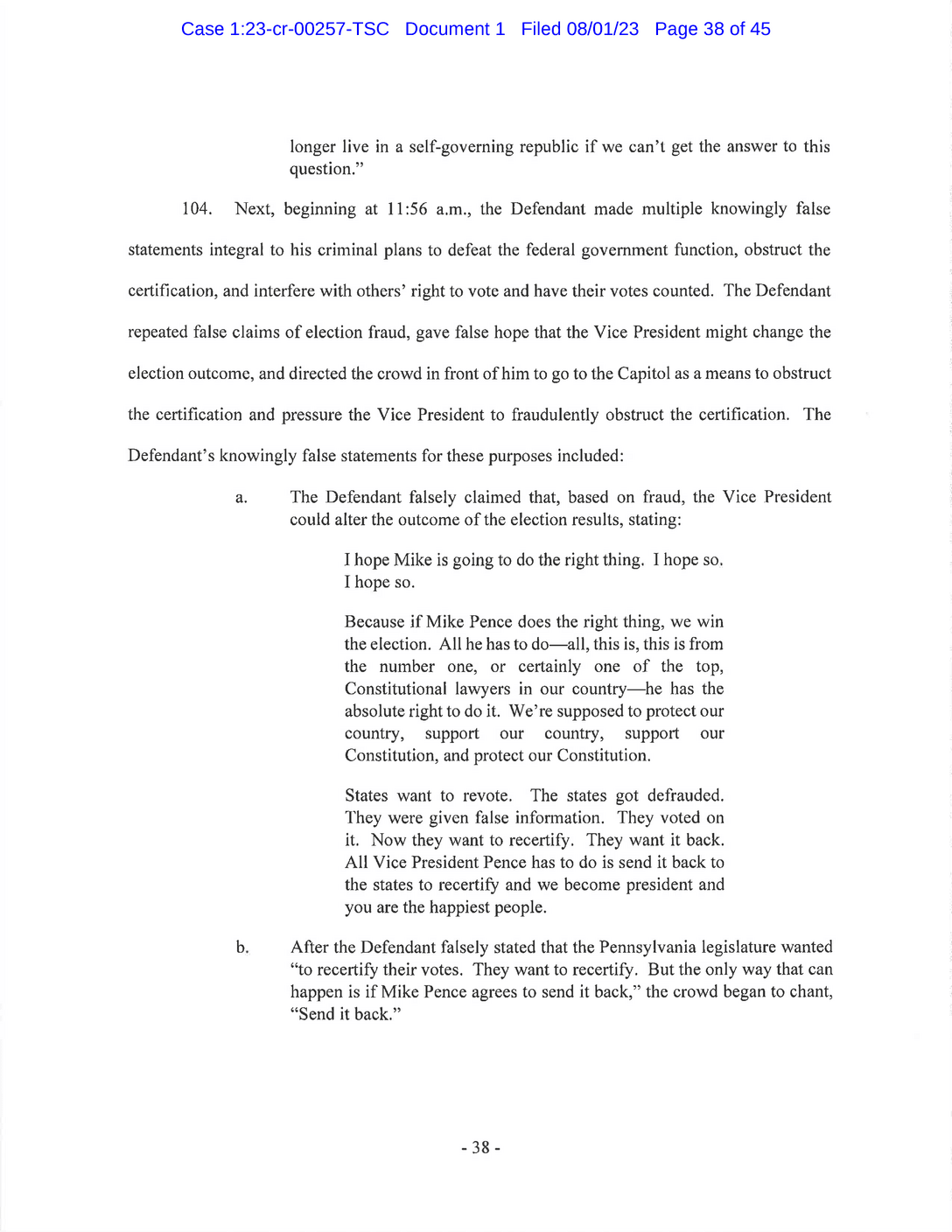
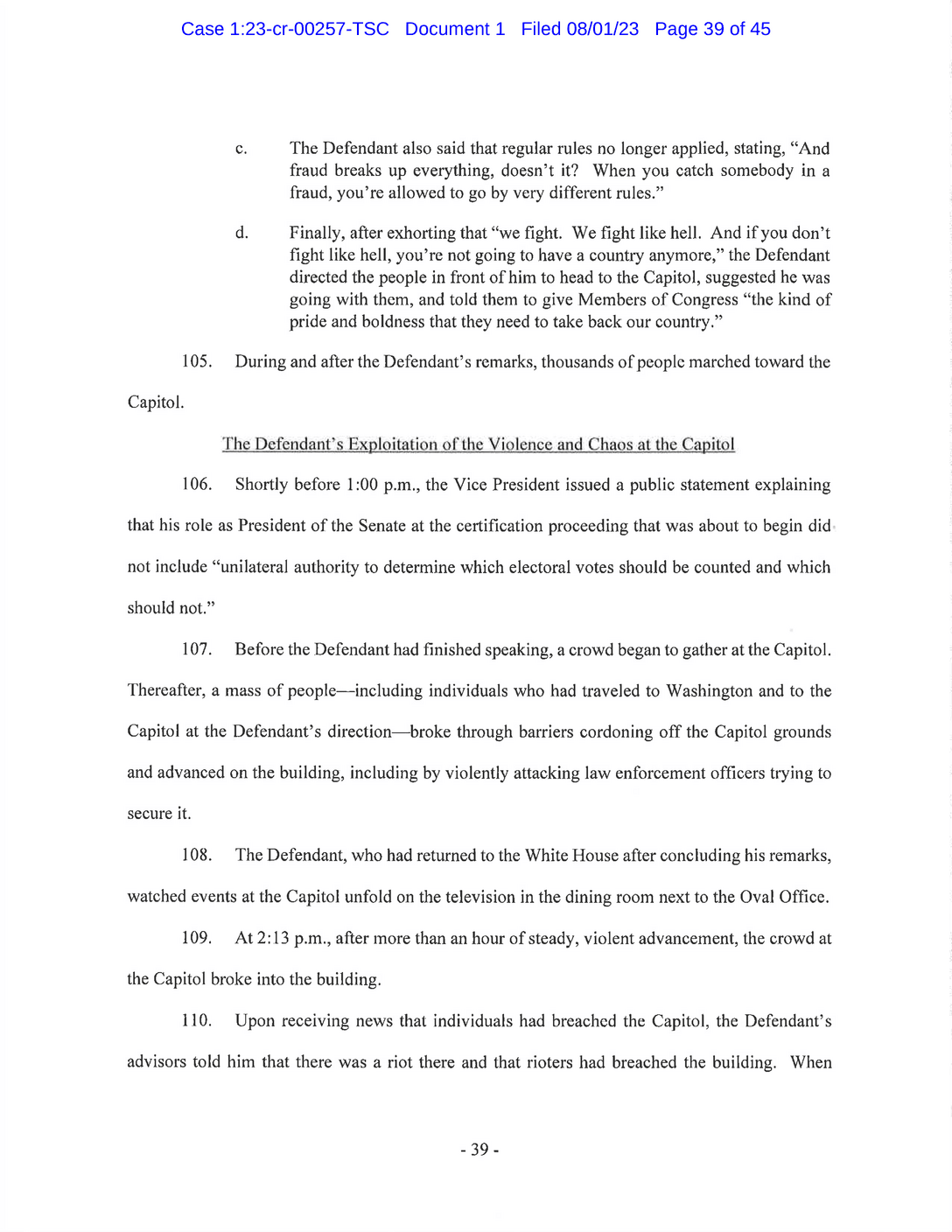
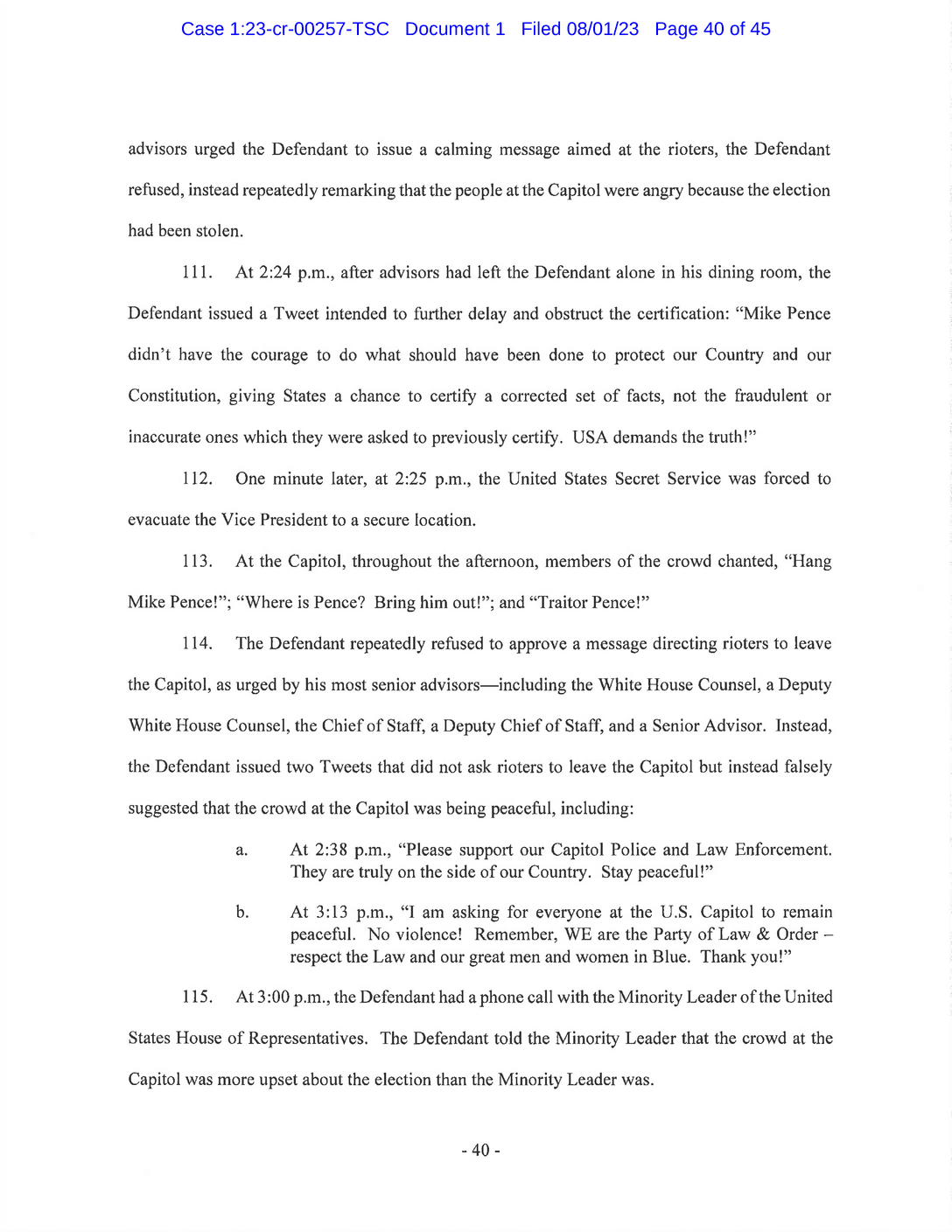
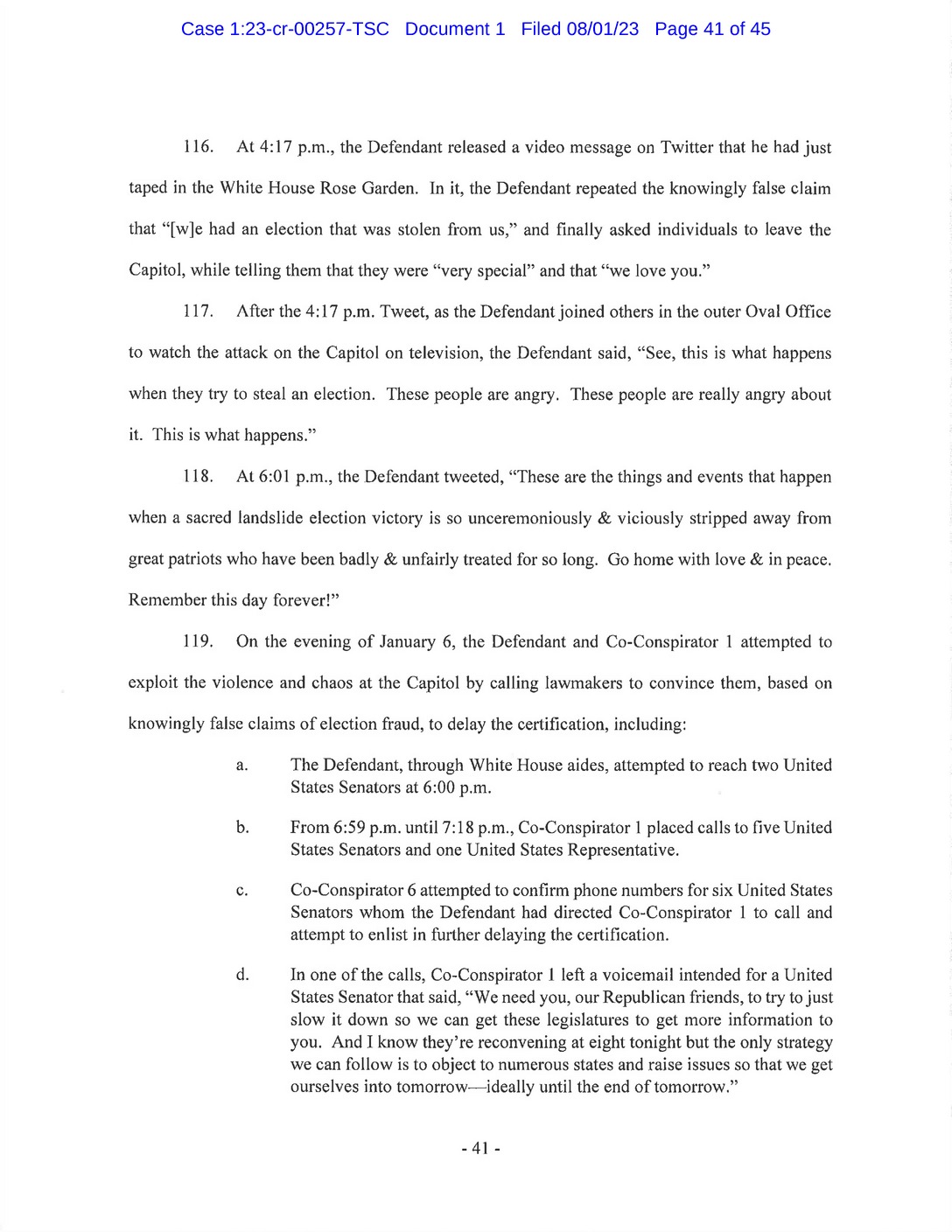
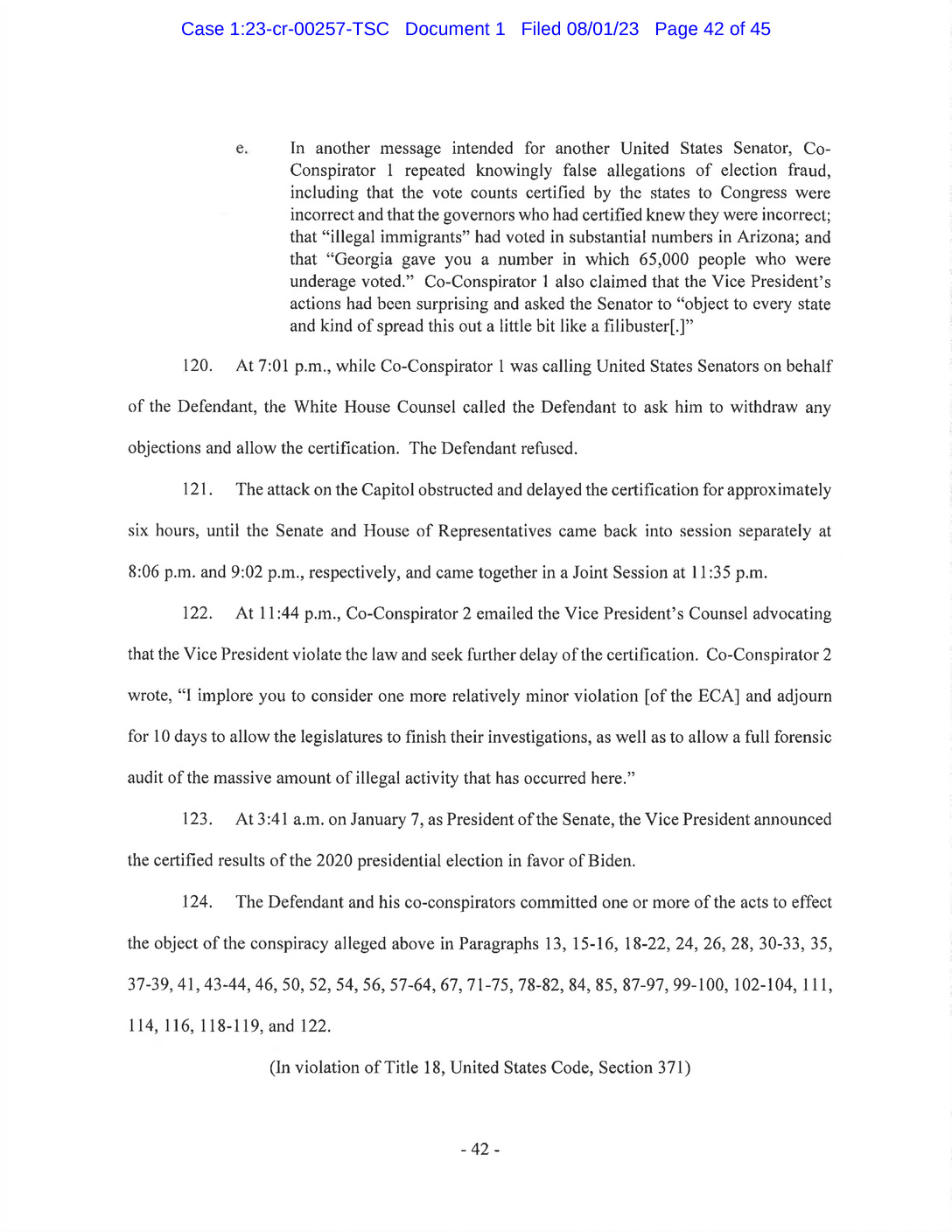
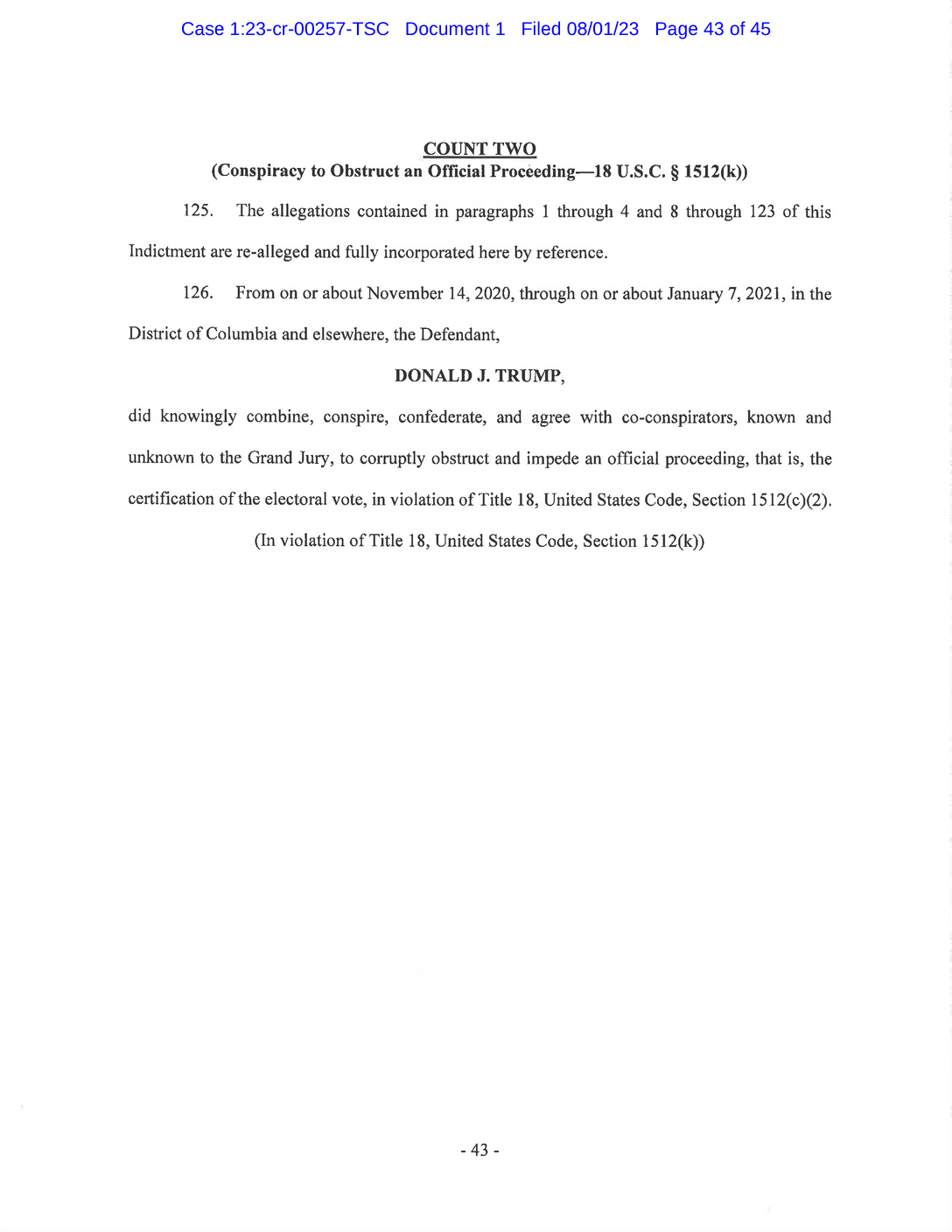
New York Times Analysis
« Previous
Next »
6
A conviction on this charge would be punishable by up to 20 years in prison. It is closely related to the next charge — essentially, the accusation is that Mr. Trump and others agreed to commit the underlying crime of trying to disrupt the session of Congress that certified Mr. Biden’s Electoral College victory.
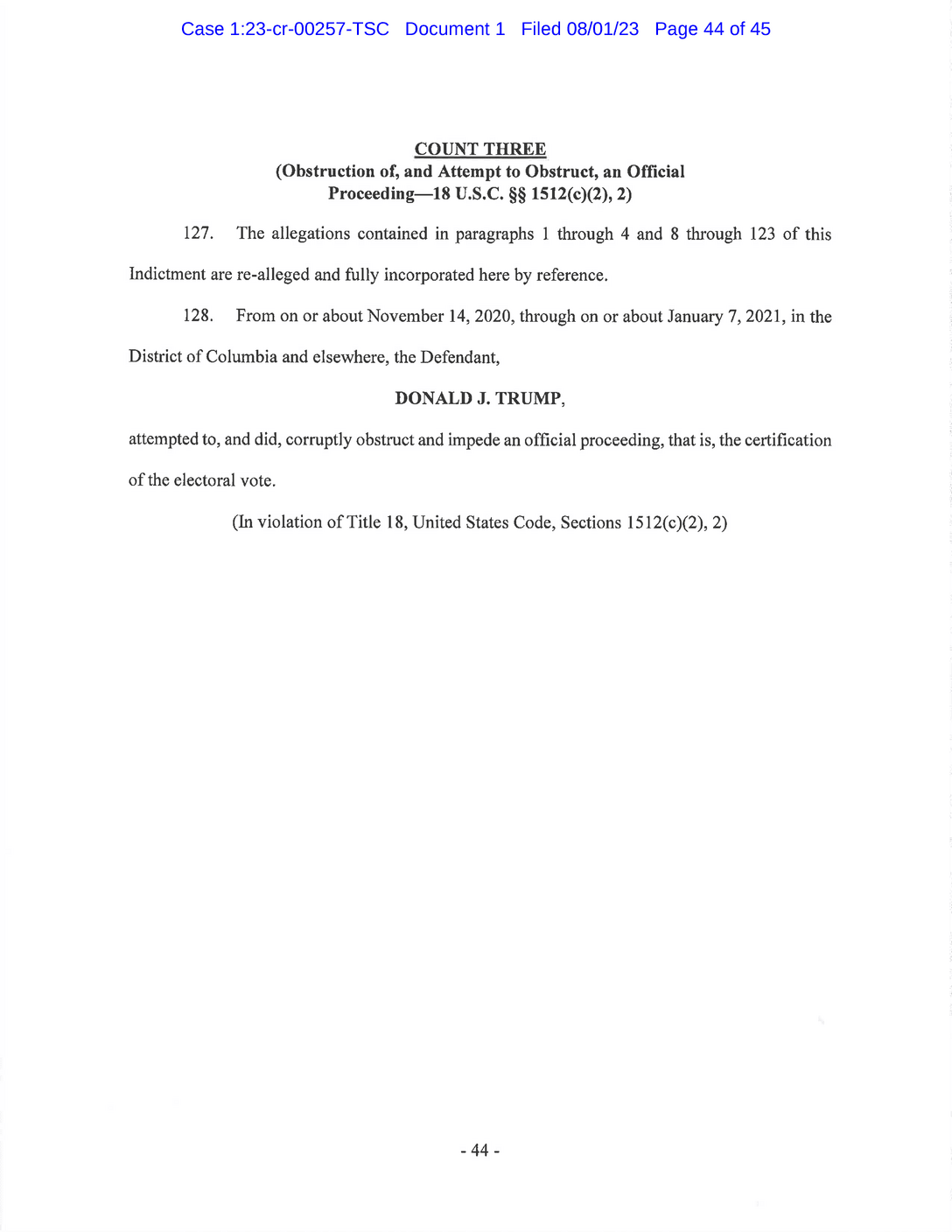
New York Times Analysis
« Previous
Next »
7
This count is closely related to the previous one. It is focused directly on the act and attempted act of disrupting the joint session of Congress. Prosecutors have already used this law to charge hundreds of people who participated in the Jan. 6 storming of the Capitol, accusing them of obstructing the joint session of Congress to certify Mr. Biden’s victory. In April, a federal appeals court upheld the viability of applying that charge to participants in the Capitol attack, but using it against Mr. Trump may raise different issues since he did not personally take part in the riot.
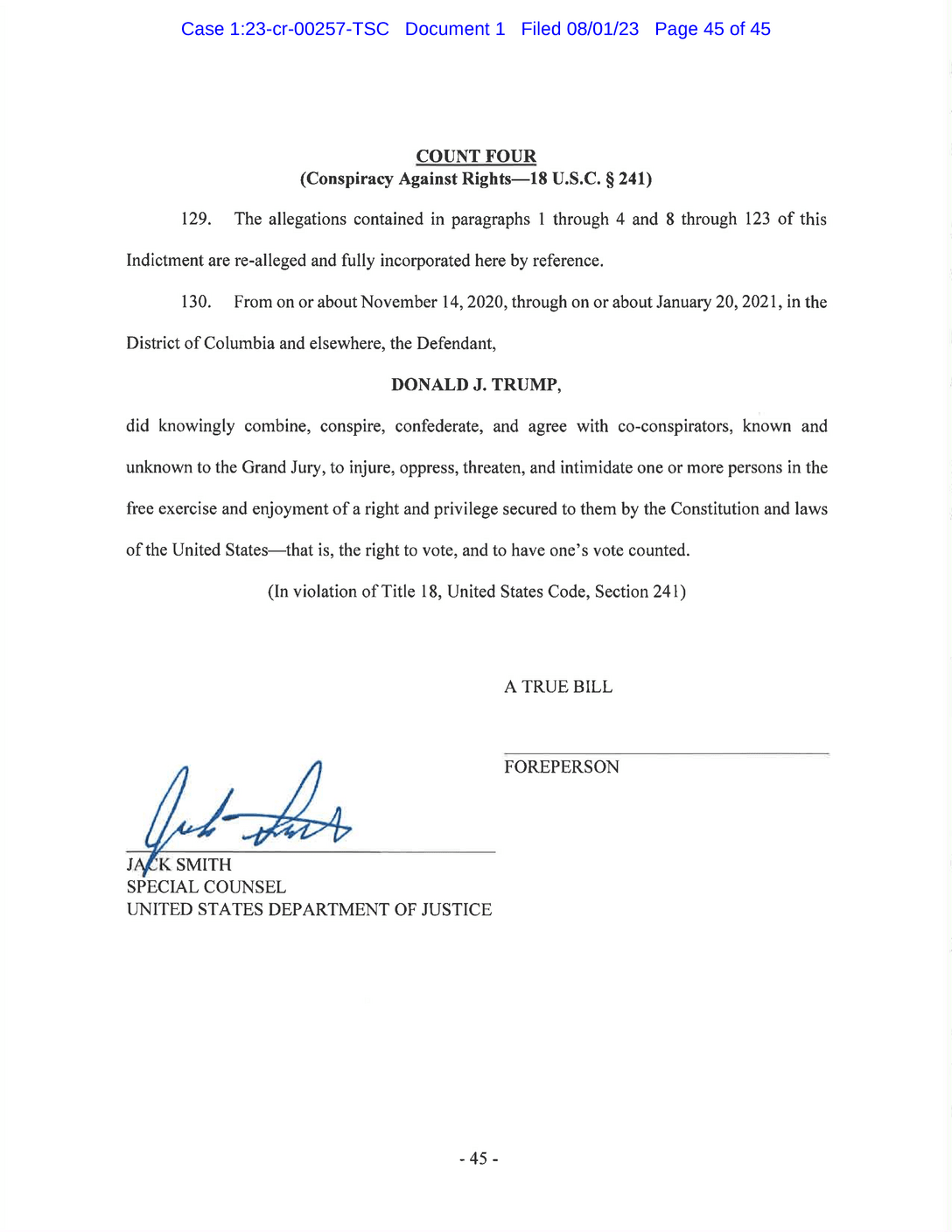
New York Times Analysis
« Previous
8
A conviction on this charge would be punishable by up to five years in prison. Congress enacted this statute after the Civil War to go after white Southerners, including members of the Ku Klux Klan, who used terrorism to prevent formerly enslaved African Americans from voting. But in a series of 20th-century cases, the Supreme Court upheld an expanded application of the statute to election fraud conspiracies, like ballot box stuffing. Essentially, Mr. Trump, who baselessly said Joseph R. Biden Jr.’s narrow victories in swing states like Georgia and Arizona were rigged, is himself accused of trying to rig the electoral outcome in those states in his favor.
Read the full article Here


